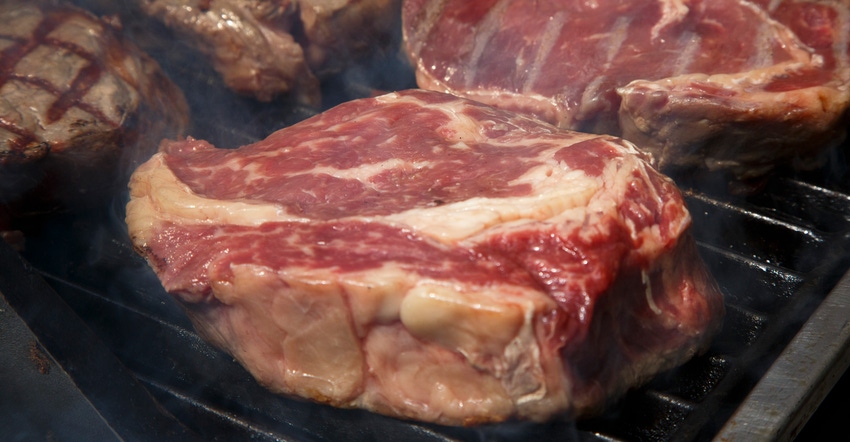Will there be a new “normal” in ag where consumers can name a farmer, not a food chain?

Ron Swanson pulls up to the community park in his maroon Buick Park Avenue, opens the car’s rear door and leads out a pig on a leash. “OK, let’s begin the barbecue. Everyone, meet your meat.”
It was the first time my husband saw this iconic "Parks and Recreation" episode. I thought he was going to fall out of the chair laughing. He’s kind of a Ron Swanson — meat eater, outdoorsman, doesn’t understand why people don’t know where their meat comes from kind of guy.
The reaction of those on the screen, in that park, was gasps and “oh, no.” To which Ron replies, and I can hear my husband as well, “Not enough people have looked their dinner in the eyes and considered the circle of life. This is your dinner; his name is Tom.”
As Ron is told he can’t slaughter a pig in the park because it is against all sorts of ordinances, he declares, “Barbecue is postponed until I can go and pick up some meat from the Food ‘n Stuff.”
The coronavirus crisis is putting the meat industry at the center of the news feed. There have been limits in grocery stores, right or wrong, on meat purchases. When shelves went bare at the “Food ‘n Stuffs” across America, consumers really had to search and find meat.
For some, it meant finding the farmers who produce beef, pork and chicken directly. In essence, they needed to meet their meat, or at least meat producers.
Many turned to the only resource they had, the internet, where they searched Facebook and websites to order online. If American farmers were going to bridge that gap between farm and fork, COVID-19 offered that opportunity. Farmers, farm organizations, university Extensions and even some state departments of agriculture responded.
Social media for meat
One of the first posts I saw regarding meat for sale came from a fellow ag journalist, well, broadcaster. Cyndi Young with Brownfield Network shared with her Facebook followers that her family farm of Rocking P Ranch near Jamestown, Mo., had beef, pork and eggs for sale.
It was a simple post to let those reading know that while the grocery store shelves may be empty, the direct-from-the-family-farm freezers were full.
Other livestock producers followed suit, increasing their daily postings on meat availability, favorite recipes and photos, lots of photos. Many farmers saw an increase in new clients. And the momentum grew.
The Missouri Cattleman’s Association posted a listing of all its members with beef for sale on its website, and promoted it on social media.
The University of Missouri Extension launched the Missouri Food Finder, a new online tool that uses an interactive map to connect consumers with farmers growing and selling locally produced food in their area. It is not just for meat; it also offers fruits and vegetables.
The Missouri Department of Agriculture has always been at the forefront of promoting locally grown food through its Missouri Grown initiative. Its website allows people to search and find a variety of products, such as meat, eggs, nuts or even jams.
These types of interactions helped consumers who were worried about the future of their food.
Future of food
While COVID-19 disrupted our everyday lives, sometimes I think it brought America back to its foundation. A look at exactly how our nation was built — on the backs of farmers, ranchers and laborers.
This time of crisis has given agriculture a chance to connect more earnestly with consumers. People are reaching out. Farmers, farm organizations, universities and dare I say it — the government — is stepping up and realizing the importance of that connection. While consumers cannot meet their meat face-to-face, and many may not want to, they are still searching for it. That bodes well for our industry.
Perhaps this direct market approach will be a result of COVID-19. And given current market prices, farmers may be able to supply consumers with their meat demands, while putting more money in their pockets.
It would be great if we continue to capitalize on this movement, build it and create a new “normal” where consumers are no long naming their favorite grocery store chain, but their favorite neighborhood farmer.
About the Author(s)
You May Also Like





